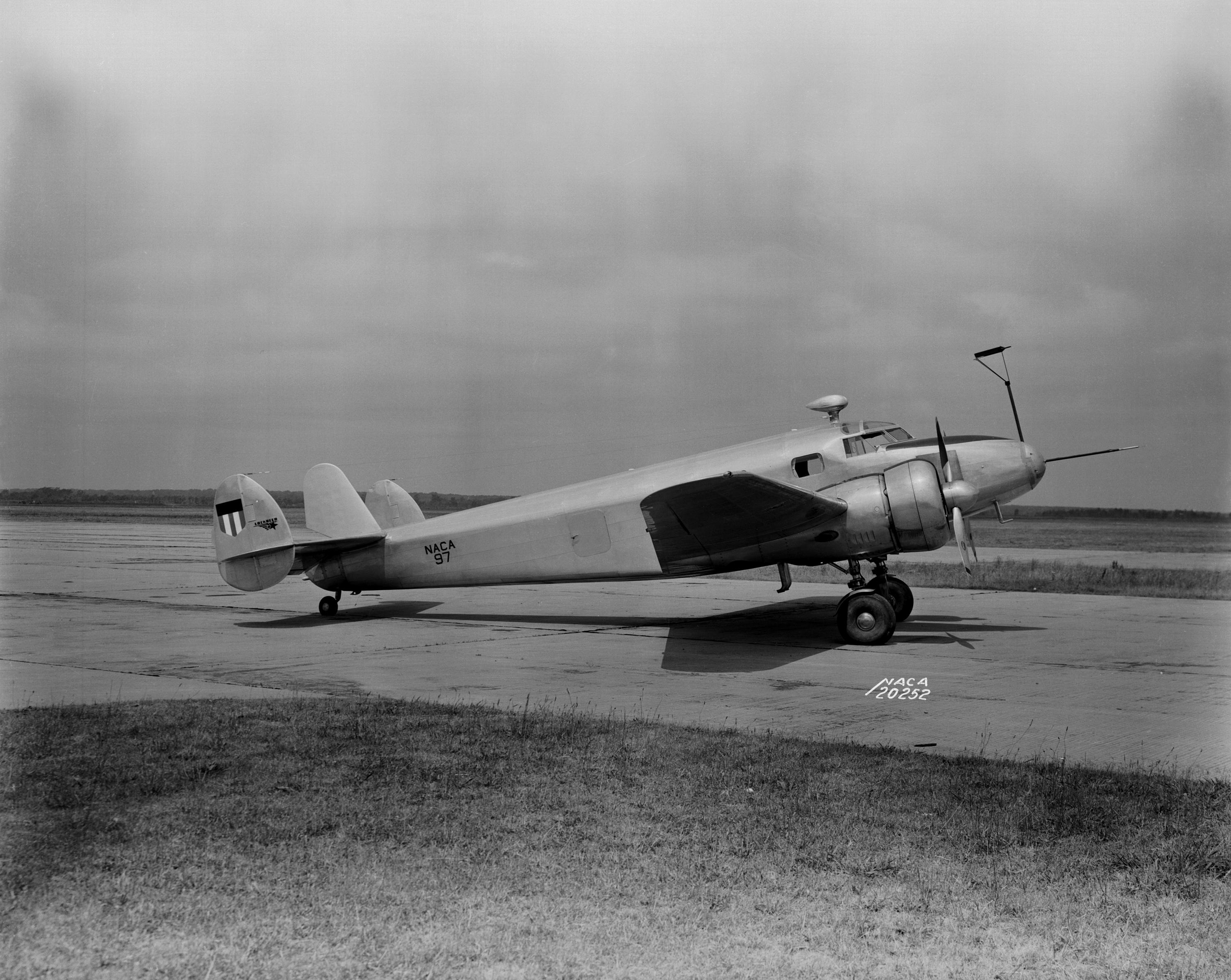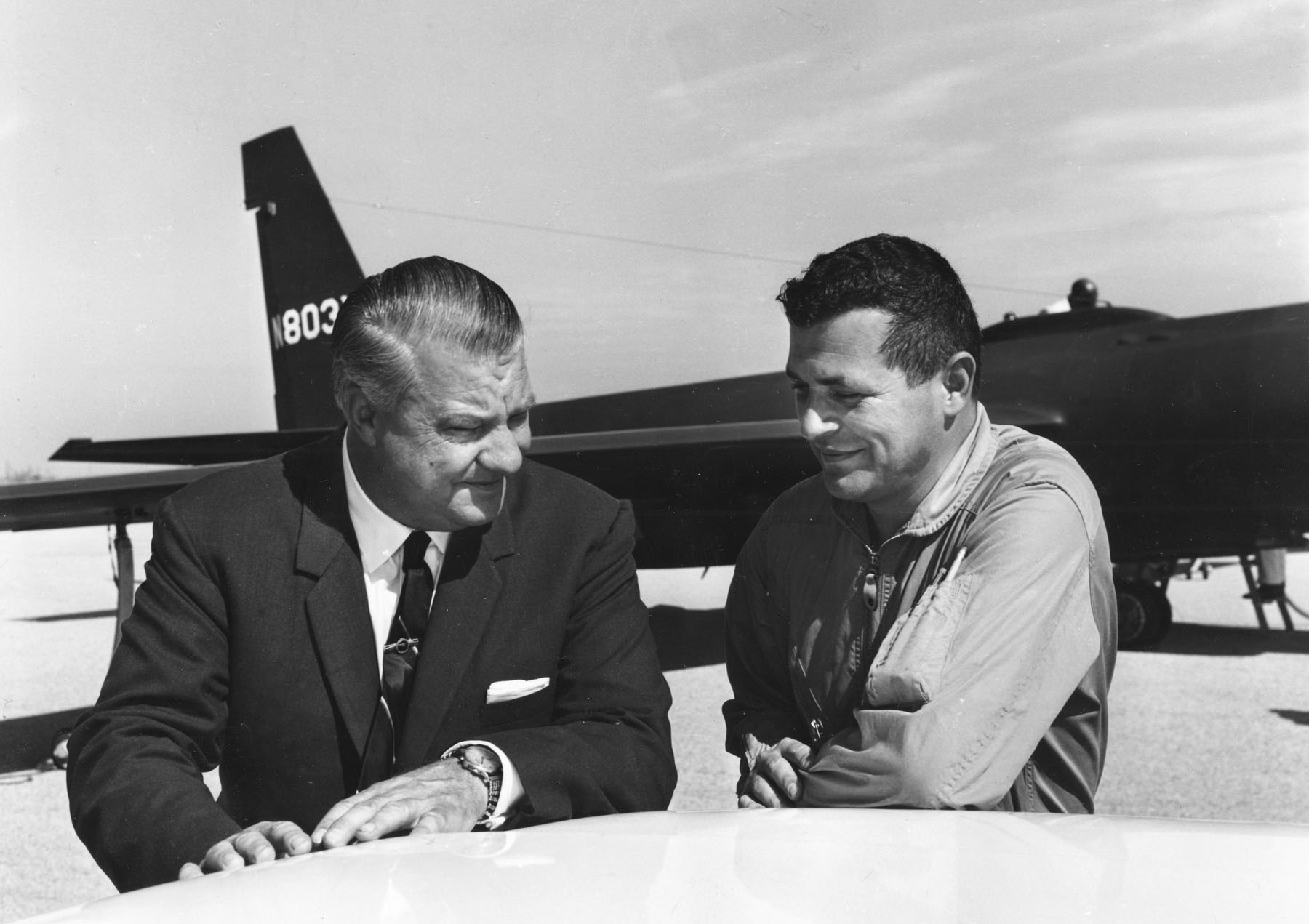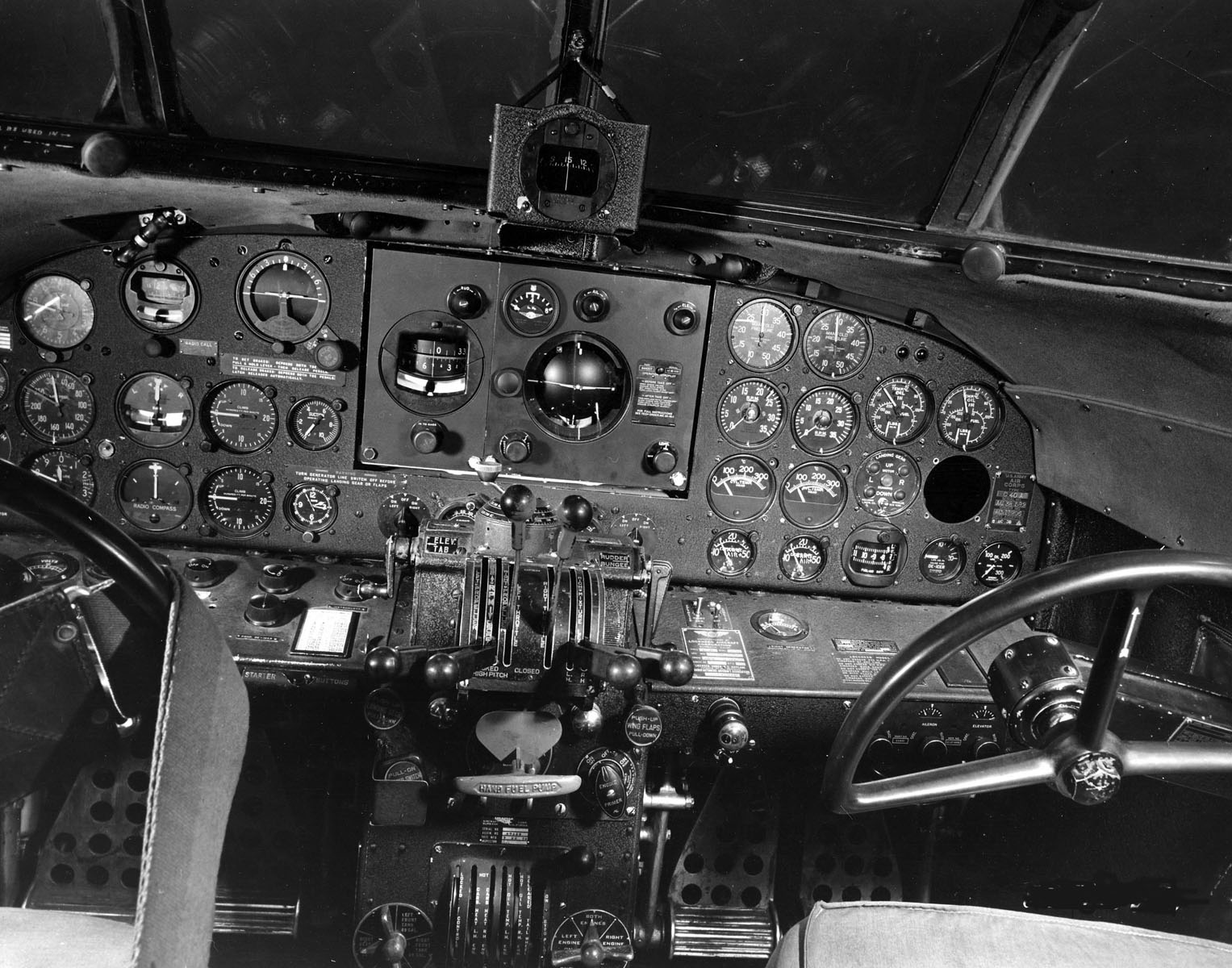|
William H. McAvoy
William H. "Bill" McAvoy was a civilian test pilot in the 1920s and 1930s for the National Advisory Committee for Aeronautics (NACA) at the Langley Memorial Aeronautical Laboratory, Langley Field, Virginia, and in 1940 helped start the flight operations division at the Ames Research Center, California. Life He had served in the U.S. Army from 1917 to 1921. Employed by NACA by 1929, McAvoy was one of several pilots, including Melvin N. Gough, Edmund T. "Eddie" Allen, and Thomas Carroll that NACA trained "in stability and control research techniques, including the ability to reach and hold equilibrium flight conditions with accuracy. As with all good research test pilots, the NACA group worked closely with flight test engineers and in fact took part in discussing NACA’s flying qualities work with outsiders. All of this helped lay the groundwork for the comprehensive flying qualities research that followed." McAvoy was involved in the testing of many different aircraft types at ... [...More Info...] [...Related Items...] OR: [Wikipedia] [Google] [Baidu] |
National Advisory Committee For Aeronautics
The National Advisory Committee for Aeronautics (NACA) was a United States federal agency founded on March 3, 1915, to undertake, promote, and institutionalize aeronautical research. On October 1, 1958, the agency was dissolved and its assets and personnel were transferred to the newly created National Aeronautics and Space Administration (NASA). NACA is an initialism, i.e., pronounced as individual letters, rather than as a whole word (as was NASA during the early years after being established). Among other advancements, NACA research and development produced the NACA duct, a type of air intake used in modern automotive applications, the NACA cowling, and several series of NACA airfoils, which are still used in aircraft manufacturing. During World War II, NACA was described as "The Force Behind Our Air Supremacy" due to its key role in producing working superchargers for high altitude bombers, and for producing the laminar wing profiles for the North American P-51 Mustang. NA ... [...More Info...] [...Related Items...] OR: [Wikipedia] [Google] [Baidu] |
Hall XP2H-1
The Hall XP2H-1 was an American prototype four-engined biplane flying boat of the 1930s. Intended as an experimental very-long-range maritime patrol aircraft, a single example was built. The XP2H-1 was the largest four engine biplane aircraft ever procured by the US Navy.''Test Pilot'' Airpower, September 1974 pp. 11-12 Development and design In 1930, the United States Navy ordered a single example of a large flying boat from the Hall-Aluminum Aircraft Corporation, to meet a requirement for an experimental very-long-range patrol aircraft. The resulting design, designated XP2H-1, was a four-engined biplane with an all-aluminum hull, scaled-up from the smaller PH flying boat, which accommodated a crew of six. The wings were of fabric-skinned aluminum construction and were of trapezoidal shape. The water-cooled V-12 Curtiss V-1570 Conqueror engines were mounted in tandem push-pull pairs between the wings, in nacelles attached to the lower wings.Wegg 1990, pp.113-114.''Flight ... [...More Info...] [...Related Items...] OR: [Wikipedia] [Google] [Baidu] |
American Test Pilots
American(s) may refer to: * American, something of, from, or related to the United States of America, commonly known as the "United States" or "America" ** Americans, citizens and nationals of the United States of America ** American ancestry, people who self-identify their ancestry as "American" ** American English, the set of varieties of the English language native to the United States ** Native Americans in the United States, indigenous peoples of the United States * American, something of, from, or related to the Americas, also known as "America" ** Indigenous peoples of the Americas * American (word), for analysis and history of the meanings in various contexts Organizations * American Airlines, U.S.-based airline headquartered in Fort Worth, Texas * American Athletic Conference, an American college athletic conference * American Recordings (record label), a record label previously known as Def American * American University, in Washington, D.C. Sports teams Soccer * B ... [...More Info...] [...Related Items...] OR: [Wikipedia] [Google] [Baidu] |
Aviation History Of The United States
Aviation includes the activities surrounding mechanical flight and the aircraft industry. ''Aircraft'' includes fixed-wing and rotary-wing types, morphable wings, wing-less lifting bodies, as well as lighter-than-air craft such as hot air balloons and airships. Aviation began in the 18th century with the development of the hot air balloon, an apparatus capable of atmospheric displacement through buoyancy. Some of the most significant advancements in aviation technology came with the controlled gliding flying of Otto Lilienthal in 1896; then a large step in significance came with the construction of the first powered airplane by the Wright brothers in the early 1900s. Since that time, aviation has been technologically revolutionized by the introduction of the jet which permitted a major form of transport throughout the world. Etymology The word ''aviation'' was coined by the French writer and former naval officer Gabriel La Landelle in 1863. He derived the term from the v ... [...More Info...] [...Related Items...] OR: [Wikipedia] [Google] [Baidu] |
Aviation Pioneers
Aviation pioneers are people directly and indirectly responsible for the advancement of flight, including people who worked to achieve manned flight before the invention of aircraft, as well as others who achieved significant "firsts" in aviation after heavier-than-air flight became routine. Pioneers of aviation have contributed to the development of aeronautics in one or more ways: through science and theory, theoretical or applied design, by constructing models or experimental prototypes, the mass production of aircraft for commercial and government request, achievements in flight, and providing financial resources and publicity to expand the field of aviation. Table key Pioneer type * Science: Contributions to aerodynamic theory, aviation principles, discoveries advancing aircraft development, etc. * Design: Original or derivative ideas or drawings for conceptual/experimental/practical methods of air travel * Construction: Building prototypes/experimental/practical aircraft * ... [...More Info...] [...Related Items...] OR: [Wikipedia] [Google] [Baidu] |
Octave Chanute Award
The American Institute of Aeronautics and Astronautics, Inc. (AIAA) established the Octave Chanute Award named after Octave Chanute. Pilot(s) or test personnel that contributed to the advancement of the art, science, or technology of aeronautics received the Octave Chanute Award. The Octave Chanute Award was renamed the Chanute Flight Award in 1978 and discontinued by the AIAA in 2005. Starting in 2017, the Chanute Flight Award was re-established as the Chanute Flight Test Award. The Chanute Flight Test Award presentation occurs biennially (odd-numbered years) at the AIAA Aviation and Aeronautics Forum.The Chanute Flight Test Award is presented to recognize significant lifetime achievements in the advancement of the art, science, and technology of flight test engineering. Self taught Octave Chanute, 1832–1910, was born in France and became a naturalized American. He was a self-taught engineer. He designed the first railroad bridge over the Missouri River and the Union Stock ... [...More Info...] [...Related Items...] OR: [Wikipedia] [Google] [Baidu] |
Institute Of The Aeronautical Sciences
The American Institute of Aeronautics and Astronautics (AIAA) is a professional society for the field of aerospace engineering. The AIAA is the U.S. representative on the International Astronautical Federation and the International Council of the Aeronautical Sciences. In 2015, it had more than 30,000 members among aerospace professionals worldwide (a majority are American and/or live in the United States). History The AIAA was founded in 1963 from the merger of two earlier societies: the American Rocket Society (ARS), founded in 1930 as the American Interplanetary Society (AIS), and the Institute of the Aerospace Sciences (IAS), founded in 1932 as the Institute of the Aeronautical Sciences. Paul Johnston was the first executive director of the organization. Jim Harford took his seat after 18 months. The newly-formed structure gathered 47 technical committees and one broad technical publication, the ''AIAA Journal''. The ''AIAA Student Journal'' was also launched in 1963. Th ... [...More Info...] [...Related Items...] OR: [Wikipedia] [Google] [Baidu] |
Kelly Johnson (engineer)
Clarence Leonard "Kelly" Johnson (February 27, 1910 – December 21, 1990) was an American aeronautical and systems engineer. He is recognized for his contributions to a series of important aircraft designs, most notably the Lockheed U-2 and SR-71 Blackbird. Besides the first production aircraft to exceed Mach 3, he also produced the first fighter capable of Mach 2, the United States' first operational jet fighter, as well as the first fighter to exceed 400 mph, and many other contributions to various aircraft. As a member and first team leader of the Lockheed Skunk Works, Johnson worked for more than four decades and is said to have been an "organizing genius". He played a leading role in the design of over forty aircraft, including several honored with the prestigious Collier Trophy, acquiring a reputation as one of the most talented and prolific aircraft design engineers in the history of aviation. In 2003, as part of its commemoration of the 100th anniversary of t ... [...More Info...] [...Related Items...] OR: [Wikipedia] [Google] [Baidu] |
Lockheed 12A
The Lockheed Model 12 Electra Junior, more commonly known as the Lockheed 12 or L-12, is an eight-seat, six-passenger all-metal twin-engine transport aircraft of the late 1930s designed for use by small airlines, companies, and wealthy private individuals. A smaller version of the Lockheed Model 10 Electra, the Lockheed 12 was not popular as an airliner but was widely used as a corporate and government transport. Several were also used for testing new aviation technologies. Design and development After Lockheed had introduced its 10-passenger Model 10 Electra, the company decided to develop a smaller version which would be better suited as a " feeder airliner" or a corporate executive transport.O'Leary 2001, p. 1. At the same time, the U.S. Bureau of Air Commerce had also sensed the need for a small feeder airliner and announced a design competition for one. In order for a candidate to qualify for the competition, a prototype had to fly by June 30, 1936.O'Leary 2001, p. 3. Lockhe ... [...More Info...] [...Related Items...] OR: [Wikipedia] [Google] [Baidu] |
North American O-47
The North American O-47 is an American observation fixed-wing aircraft monoplane designed in the mid-1930s and used by the United States Army Air Corps during the Second World War. It has a low-wing configuration, retractable landing gear, and a three-blade propeller. Design and development The O-47 was developed as a replacement for the Thomas-Morse O-19 and Douglas O-38 observation biplanes. It was larger and heavier than most preceding observation aircraft and its crew of three sat in tandem under the long canopy. Windows in the deep belly overcame the obstacle that the wings presented to downward observation and photography. The design for the XO-47 prototype originated in 1934 with General Aviation Manufacturing, a subsidiary of North American Aviation, as the GA-15. The Air Corps ordered 174 O-47s in 1937 to 1938, 93 of which were assigned to National Guard units. In 1938, the Army ordered 74 O-47Bs with a redesigned engine cowling for better cooling, an uprated engine, an ... [...More Info...] [...Related Items...] OR: [Wikipedia] [Google] [Baidu] |
Naval Aircraft Factory PN
The Naval Aircraft Factory PN was a series of open cockpit American flying boats of the 1920s and 1930s. A development of the Felixstowe F5L flying boat of the First World War, variants of the PN were built for the United States Navy by Douglas, Keystone and Martin. Development and design The PN flying boats were twin-engine biplanes with their engines mounted in nacelles between the fabric-covered wings. Other than on the PN-11 which had a different hull form, the hull had large chines running back to the first step similar to those on the F.5L. It had a standard crew of five, but was capable of carrying a relief crew for long patrols. Early machines had wood hulls and wings, with the wings covered in fabric, while various versions replaced these with metal components. A wide variety of V-12 and radial engines were fitted, due to problems with several of the engines chosen, with later versions generally using radial engines. At the end of World War I the United States Navy ... [...More Info...] [...Related Items...] OR: [Wikipedia] [Google] [Baidu] |
NACA Lockheed 12A 1940
The National Advisory Committee for Aeronautics (NACA) was a United States federal agency founded on March 3, 1915, to undertake, promote, and institutionalize aeronautical research. On October 1, 1958, the agency was dissolved and its assets and personnel were transferred to the newly created National Aeronautics and Space Administration (NASA). NACA is an initialism, i.e., pronounced as individual letters, rather than as a whole word (as was NASA during the early years after being established). Among other advancements, NACA research and development produced the NACA duct, a type of air intake used in modern automotive applications, the NACA cowling, and several series of NACA airfoils, which are still used in aircraft manufacturing. During World War II, NACA was described as "The Force Behind Our Air Supremacy" due to its key role in producing working superchargers for high altitude bombers, and for producing the laminar wing profiles for the North American P-51 Mustang. NA ... [...More Info...] [...Related Items...] OR: [Wikipedia] [Google] [Baidu] |









